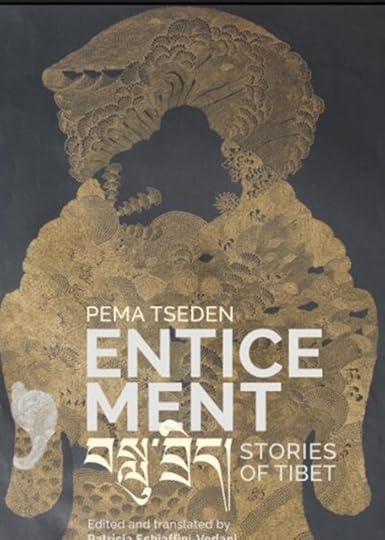Enticement
Enticement, by Pema Tseden
Enticement: Stories of Tibet marks the English-language debut of Pema Tseden, the acclaimed Tibetan writer and filmmaker. I picked up this collection for our Chinese book group—we read books by Chinese writers—and was eager to explore Tseden’s prose, having long admired his films, including The Silent Holy Stones (2005), Old Dog (2011), Tharlo (2016), and Jinpa (2019), which brought Tibetan cinema to international attention.
This collection comprises ten short stories originally written in Tibetan and Chinese between 1997 and 2012, offering a nuanced and deeply personal portrayal of contemporary Tibetan life. Tseden’s narratives weave themes of tradition, modernity, faith, and personal identity into an intricate tapestry, resonating beyond their cultural specificity while remaining unmistakably rooted in Tibet’s landscape and spirit.
The opening story, Orgyan’s Teeth, was my favorite. It follows the evolving relationship between childhood friends, one of whom is recognized as a reincarnated lama. Tseden deftly explores the tensions between faith and skepticism, mirroring a broader discourse on belief and doubt. Similarly, Tharlo portrays a shepherd’s journey into the city, where his encounter with urban life destabilizes his sense of self and tradition. This story was later adapted into an award-winning film, reinforcing its cultural significance.
Tseden’s storytelling blends realism with echoes of Tibetan folklore. A New Golden Corpse Tale: Gun reimagines a classic Tibetan folktale, threading modern elements—such as the presence of a firearm—into the narrative, creating a striking juxtaposition of past and present. That said, I found the ending somewhat predictable.
The collection also touches on the quiet but persistent influence of political and social changes on Tibetan communities. In Eight Sheep, a man grapples with his mother’s death and the transformation of ancestral grasslands due to government policies, a reflection of the broader upheaval traditional lifestyles face under modernization. The introduction of a blond-haired American backpacker adds unexpected humor to the story. Some of the stories, however, felt too brief to be truly satisfying.
Ultimately, I found Tseden’s films more compelling and immersive than his fiction. Yet, this collection remains a valuable glimpse into Tibetan life, offering an authentic and empathetic perspective from one of Tibet’s most important contemporary storytellers.



